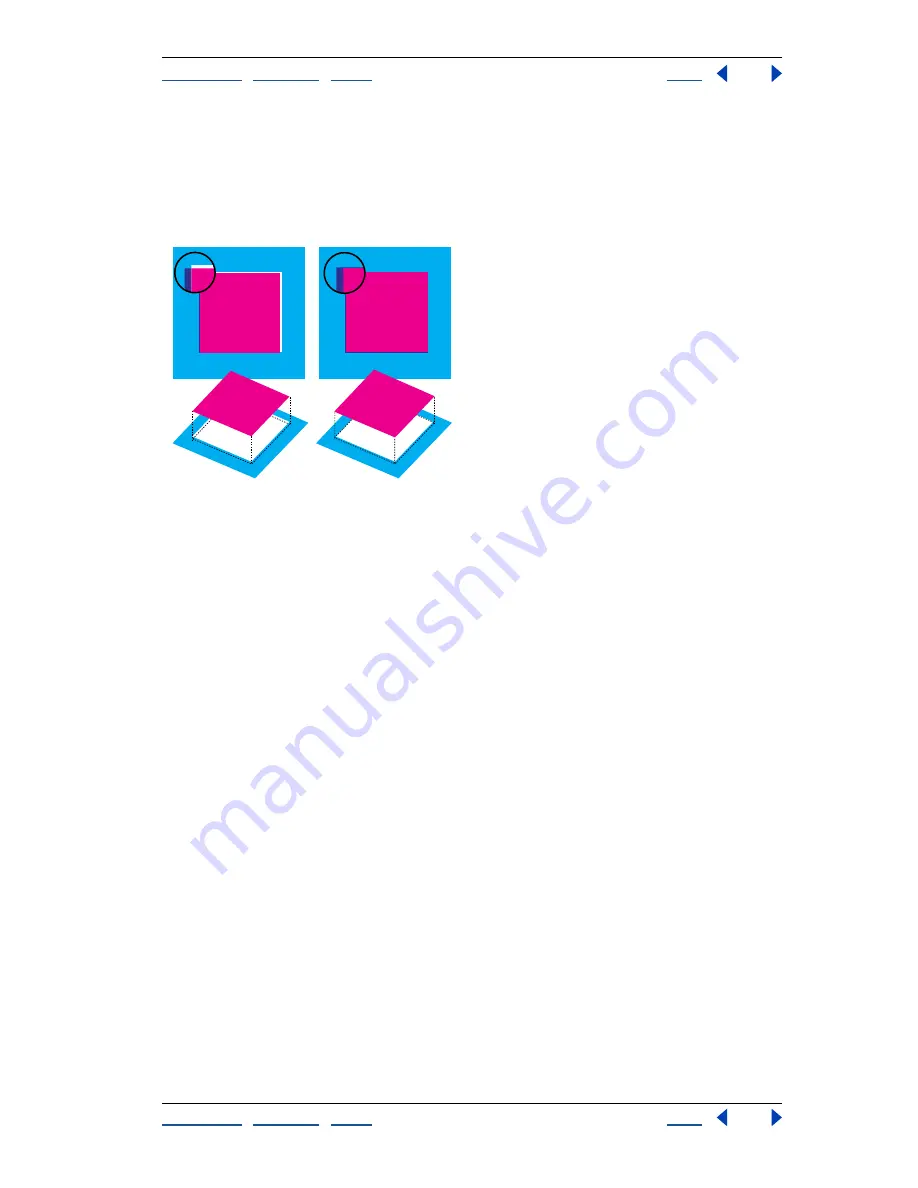
Using Help
|
Contents
|
Index
Back
479
Adobe Photoshop Help
Printing (Photoshop)
Using Help
|
Contents
|
Index
Back
479
Creating color traps
With CMYK images, you can adjust the
color trap
. A trap is an overlap that prevents tiny
gaps from appearing in the printed image, due to a slight misregistration on press. In most
cases, your print shop will determine if trapping is needed and tell you what values to
enter in the Trap dialog box.
Misregistration with no trap, and misregistration with trap
Trapping is intended to correct the misalignment of solid colors. In general, you don’t
need traps for continuous-tone images such as photographs. Excessive trapping may
produce an outline effect. These problems may not be visible on-screen and might show
up only in print. Adobe Photoshop uses standard rules for trapping:
•
All colors spread under black.
•
Lighter colors spread under darker colors.
•
Yellow spreads under cyan, magenta, and black.
•
Pure cyan and pure magenta spread under each other equally.
To create trap:
1
Save a version of the file in RGB mode, in case you want to reconvert the image later.
Then choose Image > Mode > CMYK Color to convert the image to CMYK mode.
2
Choose Image > Trap.
3
For Width, enter the trapping value provided by your print shop. Then select a unit of
measurement, and click OK. Consult your print shop to determine how much misregis-
tration to expect.
Printing duotones
Photoshop lets you create monotones, duotones, tritones, and quadtones. Monotones are
grayscale images printed with a single, nonblack ink. Duotones, tritones, and quadtones
are grayscale images printed with two, three, and four inks. In these types of images,
colored inks are used to reproduce tinted grays rather than different colors. This section
uses the term
duotone
to refer to duotones, monotones, tritones, and quadtones.
A
B






























